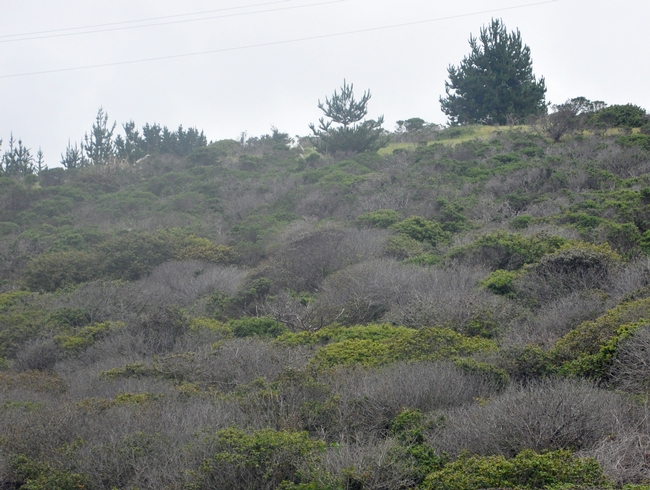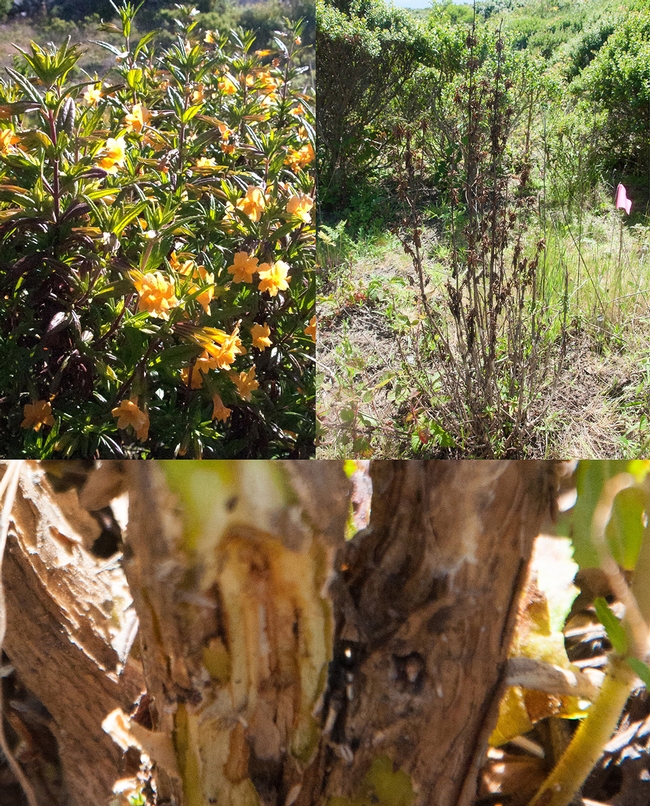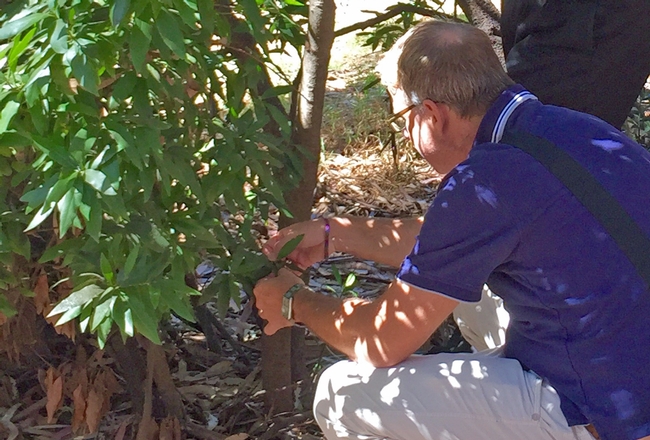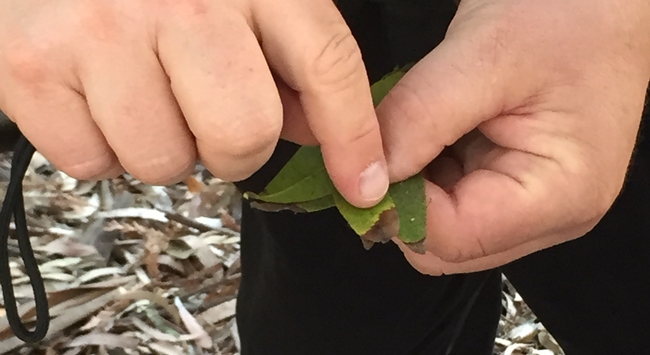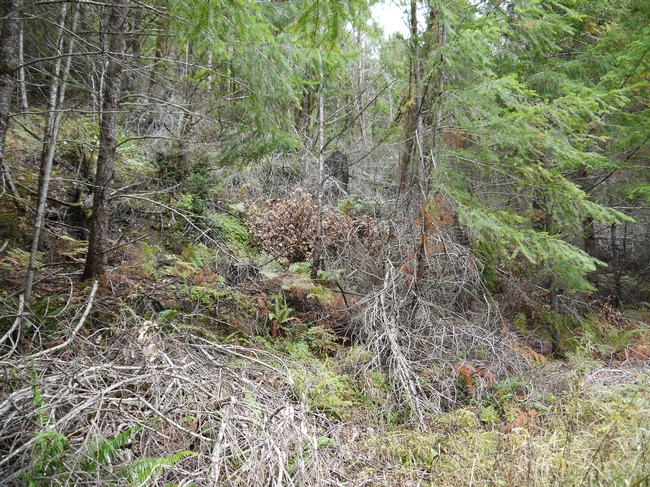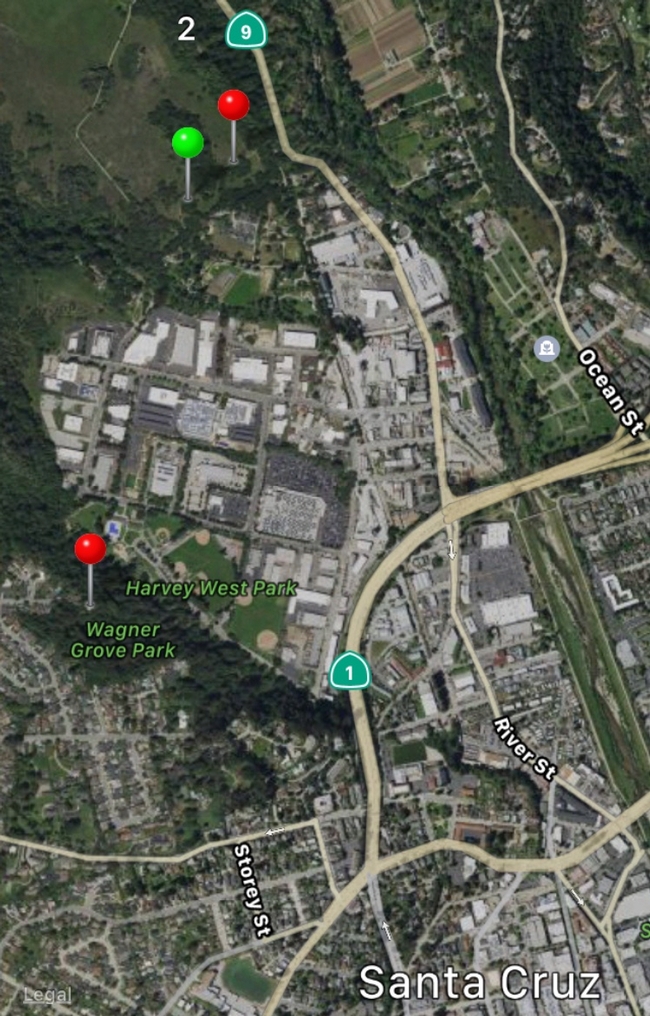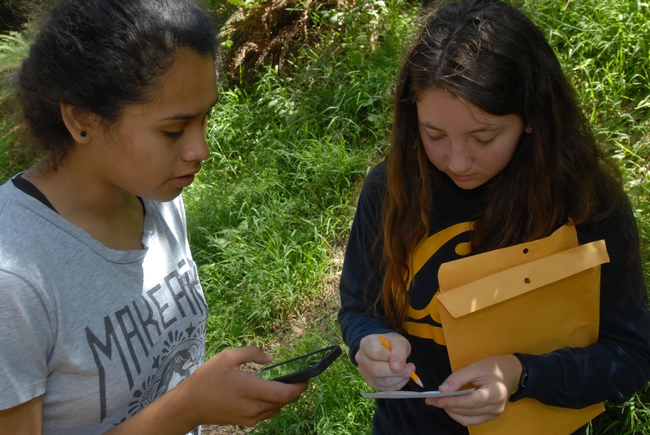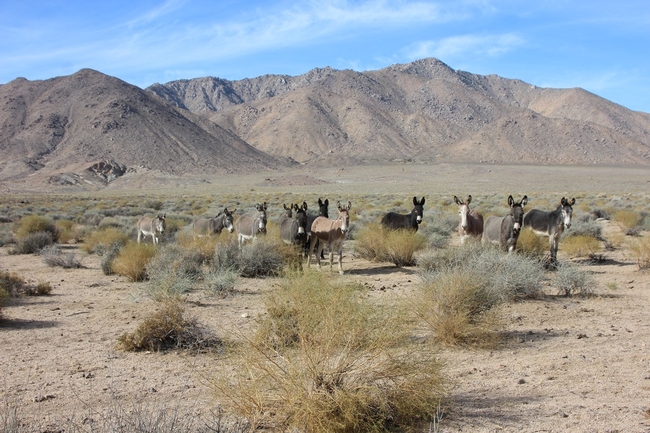Posts Tagged: death
Meet Dr. Bob--aka 'Dr. Death'--at UC Davis Picnic Day
If you visit the Dr. Death booth (it's actually a table!) at Briggs Hall during the 108th annual UC Davis Picnic Day on Saturday, April 23, you'll...
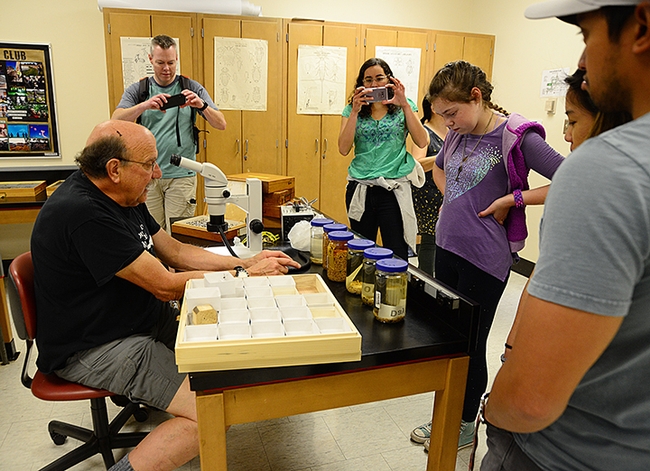
Visitors at the 2019 UC Davis Picnic Day take images of forensic entomologist Robert Kimsey of the UC Davis Department of Entomology and Nematology and his display. (Photo by Kathy Keatley Garvey)
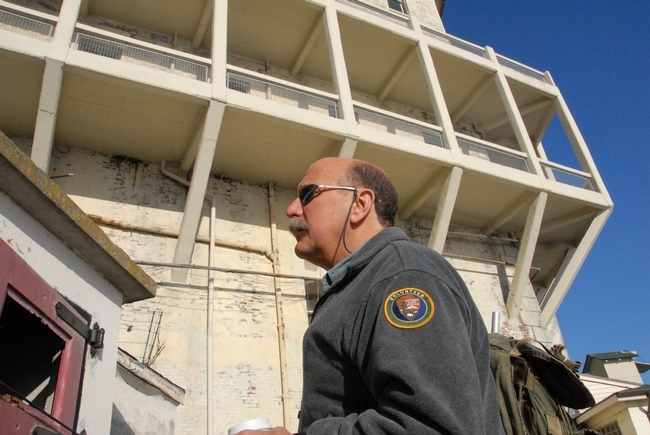
UC Davis forensic entomologist Robert "Bob" Kimsey at Alcatraz Island. (Photo by Kathy Keatley Garvey)
Phytophthora invasions linked to ecological restorations
Biological invasions are one of the three main causes for biodiversity loss globally, together with urbanization and climate change. Not unlike animals and plants, microbes can become invasive in non-native ecosystems. Some microbial invasions can lead to novel plant diseases with direct and detrimental effects on terrestrial ecosystems. The plant trade, both international and domestic, is thought to be a major pathway for the introduction and spread of exotic plant pathogenic microbes. Some introductions are accidental, but systematic introductions are significantly more detrimental for the integrity of natural ecosystems.
In a new study published in the journal Biological Invasions, Matteo Garbelotto, a Cooperative Extension specialist and adjunct professor in the Department of Environmental Science, Policy, and Management (ESPM), investigates whether multiple species of the plant killer genus Phytophthora—which includes the infamous Sudden Oak Death pathogen—could have been brought into natural habitats during restoration projects. Through one of the first controlled studies on the subject, Garbelotto and Laura Sims, a study co-author at Louisiana Tech University, found that plants used in restoration projects often were infected and killed by one or multiple Phytophthora species.
From surveys of control undisturbed sites near failing restorations, as well as plant production facilities providing the plant stock used in these restorations, the authors were able to conclude that these pathogens were not already present in restored habitats. Rather, they were introduced through plants or soil contaminated in the plant production facilities themselves.
The researchers tested six plant species for the presence of Phytophthora in 14 study sites across three San Francisco Bay Area counties. A statistical analysis found significantly higher percentages of Phytophthora occurrences on plants and soil in restoration sites and adjoining disturbed sites than in control undisturbed sites, where no Phytophthoras were isolated. The researchers found greater rates of disease symptoms and plant death, as well as a lack of regeneration, where Phytophthoras were present.
“All other studies so far simply reported the presence of these soil borne pathogens in restorations, but without any solid experimental evidence that they were introduced through the restoration efforts,” says Garbelotto. “In this light, the paper is transformative. The fact that Phytophthoras were found in all restoration sites studied and on multiple plant hosts shows these are not isolated occurrences, but that habitat restoration projects in the near past have repeatedly and systematically resulted in the introduction of these aggressive pathogens.” He adds that the absence of these pathogens in neighboring unrestored and undisturbed sites suggests that at least some of the species found may be exotic, and particularly deadly, for plant hosts that have not previously encountered them.
“The second key result of our study was the finding that these pathogens are spreading invasively through infested soil and water well outside the borders of restorations”, says co-author Laura Sims. “This indicates that extremely costly restoration projects, rather than restoring the integrity of the ecosystem, may further deteriorate its health, by introducing invasive plant pathogens. Historically, man has never been able to eradicate these pathogens, once they have established in natural habitats. We have shown such establishment is happening in natural habitats near the restoration sites we studied”
The study was partially conducted in the Presidio of San Francisco, a national park site. “Plantings and landscape restorations are a big part of what we do in the Presidio,” says Christa Conforti, biologist and Integrated Pest Management Specialist with the Presidio Trust. “This study shows that restorations have unwittingly introduced plant pathogens that cannot feasibly be eradicated, and that repeated introductions are particularly dangerous. This evidence justifies investing our resources to ensure we take significant precautions when using nursery-grown plants in our landscapes, to help us meet our mission of protecting biodiversity and native ecosystems into the future.”
As a faculty member in ESPM, Garbelotto researches exotic forest diseases, fungal ecology, biodiversity, geonomics, wood decay and tree stability, and the management of forest diseases. He also runs a citizen science initiative in California to find and combat the exotic disease sudden oak death (SOD), known to have decimated native oak and tanoak populations. Garbelotto was featured in Breakthroughs magazine in 2019. The lab he runs also provides diagnostic services and forensic evidence on factors leading to tree failure.
The full study, titled “Phytophthora species repeatedly introduced in Northern California through restoration projects can spread into adjacent sites,” can be found on the Biological Invasions website.
Related articles:
Coordinated response to inadvertent introduction of pathogens to California restoration areas
Citizen science SOD Blitz starts April 11 with new COVID-19 safety measures
With Californians sheltering in place to stop the spread of new coronavirus COVID-19, the annual citizen science project to map sudden oak death disease has been redesigned to ensure the safety of participants. The first in a series of SOD blitzes of 2020 will be April 11 in Napa. The events are free.
“We have been able to redesign the 2020 SOD Blitzes to make them a safe and legal activity that allows volunteers to exercise outdoors, and this powerful citizen science program will help us protect our forests' health,” said Matteo Garbelotto, UC Cooperative Extension forest pathology specialist and adjunct professor in the Department of Environmental Science, Policy and Management at UC Berkeley and event organizer.
Sudden oak death disease has killed more than 50 million of the state's iconic oaks and tanoak trees between Humboldt County and Monterey County, threatening survival of several tree species. In 2019 alone, 1 million tanoaks succumbed to sudden oak death, according to 2019 tree mortality data released by the U.S. Forest Service.
“The presence of new SOD strains is alarming and the SOD blitzes are the best, if not the only, program to intercept them before they spread,” Garbelotto said.
SOD Blitz volunteers will register online and take the training online at www.sodblitz.org to learn how to identify SOD symptoms and to carefully collect symptomatic leaves from California bay laurels and tanoaks. Collection and survey materials, which have been prepared in a sterile environment, will be picked up by participants at a local SOD Blitz station conveniently located near a parking lot. They can return samples to the same SOD Blitz station or by mail.
As citizen scientists, volunteers should focus on following safety guidance as well as adhering to research protocols. Social distancing – at least 6 feet away from other volunteers – and clean “housekeeping” rules will be strongly enforced when picking up or returning materials and during leaf collection.
For parents who are home schooling their children, this is an activity that the family can do together.
Garbelotto encourages tree care specialists to participate in the SOD blitzes.
“Besides offering free bay laurel and tanoak tests for their clients, we now offer tree care professionals free enrollment in UC Berkeley Forest Pathology Laboratory's OakSTePprogram, which allows them to test oaks for SOD infection,” Garbelotto said.
For more information, visit www.treefaqs.org or email the organizer of the SOD Blitz in your community (See schedule below).
Sudden Oak Death Blitzes 2020
All collection materials will be provided, but participants need a mobile phone or GPS device to install the free SODmap mobile app.
New format due to COVID-19
1. Training (30 minutes) and sign-up (5 minutes) must be done online at www.sodblitz.org before collecting the sampling materials at the SOD Blitz Stations in the locations specified below. Please sign up before you start the survey, and preferably when you take the online training.
2. Once at your local SOD Blitz Station you can pick up one or two collection packets following the social distancing rules of the State of California clearly specified in the online training. Stay at least 6 feet from other collectors. Bring your own pencil. Each packet allows you to sample 10 trees. Do not pick more unless you discussed it with the organizer.
3. Before you start the survey, make sure you have downloaded the free App “SODmap mobile” to determine the exact location of the trees you sample.
4. Each SOD Blitz has a start and end date, including the hour. You can pick up materials at the start time and you have to return your samples and any unused collection materials by the end date and cutoff time.
5. You can sample private properties with the owner's permission, alongside public roads and in parks or open spaces that are open to the public.
6. If you have any questions, please email your local organizer. Thank you so much for your participation.
Napa Blitz
Saturday, April 11 at 10 a.m. to Tuesday, April 14, 10 a.m.
SOD Blitz Station located on front porch of the Napa County Agriculture Commissioners Office Building 1710 Soscol, Napa
Please mail samples to UC Berkeley using the preprinted mail labels and postage included in each packet.
Contact: Bill Pramuk info@billpramuk.com
For a schedule of SOD Blitzes at other locations, visit https://nature.berkeley.edu/matteolab/?page_id=5095.
Volunteers needed to stop SOD from killing oak trees
“Two new dangerous SOD strains are at the doors of our forests,” said Matteo Garbelotto, UC Cooperative Extension forest pathology specialist in the Department of Environmental Science, Policy and Management at UC Berkeley. To assess the movement of SOD, he has mobilized citizen scientists for what he calls “SOD blitzes.” The first in a series of SOD blitzes of 2020 will be April 11 in Napa.
“We had some great results last year and participation continued to be good after 13 years of SOD blitzes,” Garbelotto said.
In Sonoma County, the 2019 SOD infection rate doubled that of 2018, and in Napa County, SOD detection was four times higher than the previous year. In the East Bay, between Richmond and San Leandro, SOD infection spiked – from 1% to 12%. The SOD infection rate tripled – from 6% to 18% on the western slopes of the Santa Cruz Mountains in San Mateo County.
As the disease expands its path of forest destruction, the UC Cooperative Extension scientist says more volunteers are needed to sample trees.
“The disease is moving to new counties outside of the current area of infestation,” Garbelotto said. “Even in our Bay Area neighborhoods, SOD of 2019 is not the same SOD of 10 years ago: different distribution, new local outbreaks, and new hosts are emerging, as the disease becomes more and more established in its new home.”
Garbelotto sees the SOD blitzes as the only hope for early detection of the new SOD strains.
“If these new strains arrived and spread in our forests, they could deliver a fatal blow to our forests,” he said. “By collecting symptomatic plant material in their neighborhoods, volunteers will make the most significant contribution possible to intercept these strains.”
Volunteers are taught to identify SOD symptoms and to carefully collect symptomatic leaves from California bay laurels and tanoaks. Participants in the SOD blitzes will be asked to quantify their efforts to stop SOD to show public interest in saving oaks and tanoaks when applying for funds to defeat the tree-killing disease.
Garbelotto is encouraging tree care specialists to participate in the SOD blitzes.
“We have enhanced the benefits for tree care professionals who participate in the blitzes,” Garbelotto said. “Besides offering free bay laurel and tanoak tests for their clients, we now offer them free enrollment in UC Berkeley Forest Pathology Laboratory's OakSTeP program, which allows tree care professionals to test oaks for SOD infection. It could be enormously beneficial to everybody.”
For more information about the SOD blitzes, visit http://ucanr.edu/sodblitz2020faq or www.sodblitz.org. See the 2020 SOD Blitz schedule at http://ucanr.edu/sodblitz2020.
Non-native wild burros cause natural resource damage
The National Park Service has contracted with Peaceful Valley Donkey Rescue to humanely remove 2,500 to 4,000 burros in Death Valley National Park, a particularly challenging effort because the Bureau of Land Management, which manages adjoining land, does not consider the non-native equines a problem, reported Miranda Willson in the Las Vegas Sun.
The rescue organization rounds up the burros and puts them up for adoption.
Experts say the burros damage vegetation near the park's desert springs, which support rare and endemic fish, plants, invertebrates and insects. They also compete with native grass-eating mammals — like endangered desert bighorn sheep — for food and access to increasingly rare watering holes, according to Laura Snell, livestock and natural resources adviser at the University of California Cooperative Extension.
“We've seen quite a bit of competition at watering holes throughout Nevada and northeast California,” Snell said. “All of those animals need water, and there's maybe only one watering hole available year-round.”
Executive director of Peaceful Valley Donkey Rescue Mark Meyers said wild burros are a part of American history that people can experience and preserve by adopting them.
“We used them for the Spanish Trail, we used them for Catholic mission systems, we used them for the railroad, we used them for mining. We used them for all these capacities, and then we said, ‘We don't need them anymore,' ” Meyers says. “These animals built our country, yet they're the ones that aren't supposed to be here.”


